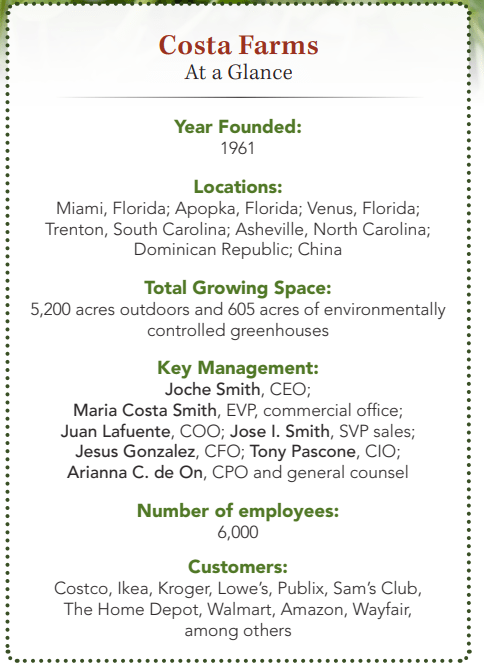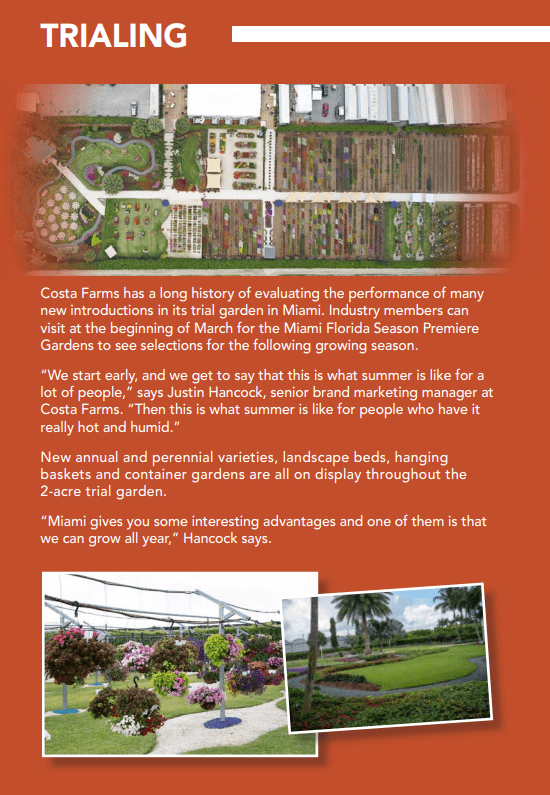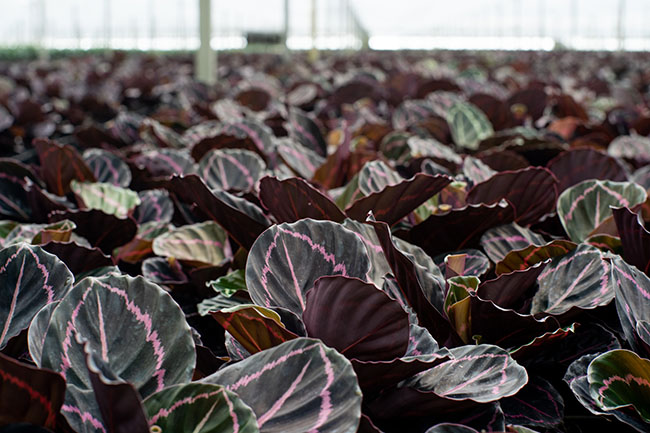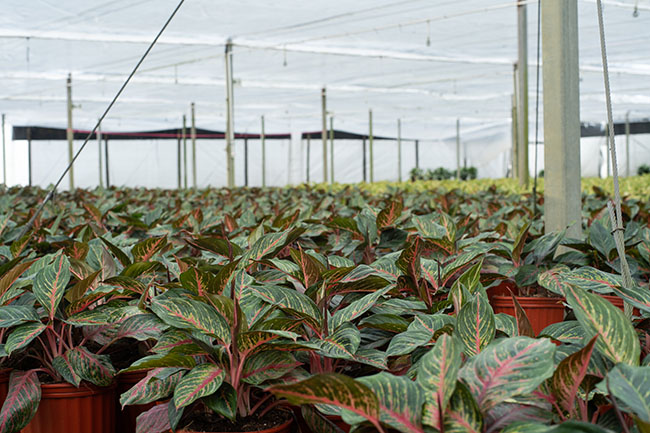
Cover Story — Primed for a Consumer Brand
Costa Farms needs little introduction as a key international player in the indoor and bedding plants arena. With approximately 5,200 acres outdoors and 605 acres of environmentally controlled greenhouses, Costa Farms is one of the biggest “big growers” out there.
This August, Costa Farms announced a pivot to consumer marketing with new branding efforts and plans to double down on educating and engaging with the end consumer.
“We’ve been focused on growing plants that meet the needs of retailers by appealing to end consumers,” says Joche Smith, Costa Farms CEO. “With changing demographics and the renewed enthusiasm with gardening — particularly indoor gardening post COVID-19 — we see more consumers than ever want to directly communicate with the team that grew their plants. We’re embracing this opportunity to build relationships with the plant community and putting more effort into connecting with new gardeners.”
This major shift in its communication strategy seemed like the perfect time for Big Grower to sit down with Justin Hancock, senior brand marketing manager at Costa Farms, to see exactly what these changes mean for the business and our industry.
 A HISTORY OF GROWTH
A HISTORY OF GROWTH
Costa Farms dates back to 1961 when Jose Costa Sr., a Cuban immigrant, started growing tomatoes on 30 acres of land in South Florida. His portfolio then expanded to calamondin citrus before switching to foliage plants late that decade.
After Hurricane Andrew wiped out the Florida farm in 1992, the third generation of the family took over, led by Jose’s grandchildren, Jose Costa and Maria Costa Smith, along with Maria’s husband Jose “Joche” Smith. Today, Joche Smith serves as CEO, while Maria Costa Smith is executive vice president. The fourth generation is also involved in the family business now, with Jose I. Smith as senior vice president of sales.
Costa Farms has made several acquisitions throughout the years to get to where it is today, but 2017 was a particularly eventful year for the business. In March of that year, Costa Farms acquired one of its biggest competitors, Delray Plants, greatly expanding its customer base and serving as a catalyst to launch e-commerce. Later in 2017, financial holding company Markel Corp. acquired a majority interest in Costa Farms.
“Markel has ultimately been a good thing for Costa Farms,” says Hancock. “They’re a great partner. There’s a lot more access to capital than there was in the past, so it gives us more flexibility on what we want to do and how we plan, and, to a degree, it also gives us a competitive advantage over some who continue to need to go to traditional banks or resources.”
Today, Costa Farms employs approximately 6,000 people at peak across its locations stateside in Florida, North Carolina, and South Carolina, and abroad in the Dominican Republic and China. An office in China allows for greater efficiency and quality with suppliers, while the 1,000 acres in the Dominican Republic are for stock production.
SEEING AN OPENING
The 2021 National Gardening Survey found 16 to 18 million new people started gardening during the previous year, and with that came a huge interest in an already growing market: houseplants. As a huge player in the indoor plant space for decades, Costa Farms saw even more opportunity.
“With the explosion of houseplants after the pandemic, we realized there’s an opening. Consumers really care where their plants are coming from; they want a relationship,” Hancock says. “If you look at brand studies on indoor right now, it’s a wide-open space. And so, we really think that we have the opportunity to, in five years, be the company that has major brand awareness within indoor.”
Costa Farms has invested its resources heavily into research and development, launched a direct-to-consumer plant shop (shop.costafarms.com), and introduced an education platform and podcast, PlantRx, all to better reach consumers and stay ahead of consumer trends, which are moving faster than ever.
“We’re putting a lot of investment into watching social media, spending time consuming content the way that the consumers do,” Hancock says. “Many of our team members are out visiting stores. It’s not just looking at the store; it’s paying a lot of attention to consumers and understanding, watching what they’re doing, how they’re behaving.
“There’s so much data there that it’s easy to overlook, just spending an hour perusing plants and watching people as they do the same.”
HOUSEPLANTS & CONSUMER BRAND
As the business shifts its communication strategy to an increased focus on gardeners, indoor and outdoor, and building a consumer brand, Hancock explains why this makes sense for Costa Farms.
“Our vertical integration and scale are two of our biggest strengths,” he says. “We can meet such a wide range of consumer solutions and retailer needs across various channels. Whether you’re an e-tailer, whether you’re a grocery store, whether you’re a décor store like West Elm, we’re able to produce solutions, both for you as the retailer and your type of consumer.”
Costa Farms serves a vast number of retailers from big boxes like Lowe’s, The Home Depot and Walmart to less-traditional customers for wholesale growers such as Wayfair and Ikea (see sidebar on “Costa Farms at a Glance”).
Hancock says that Costa Farms tries hard to make sure it’s bringing the best options for each retailer’s set of needs, and these needs — and their customer bases — can vary greatly.
“The houseplant consumer isn’t a thing; there are so many segments,” he says. With our brand redesign, we’ve come up with some new segments that are allowing us to look at not only the content that we’re doing, but also the products that we’re positioning in a fresh way that we’re hoping is going to resonate better than what it’s been in the past.”
Tags and point-of-purchase (POP) materials are a large piece of the puzzle when it comes to creating awareness for Costa Farms. With giftable home décor such a large part of the indoor business, a branded pot may not make sense in all instances, according to Hancock. Instead, Costa Farms wants consumers to see POP material that positions the brand as the expert for their needs and to associate a certain pottery look with Costa Farms.
“At a Lowe’s or a Home Depot in the houseplant section, a pothos is a pothos, and we see the opportunity to make Costa Farms a draw,” Hancock says. “With enough investment and with enough excitement, consumers are going to be looking for a Costa Farms plant, not a generic pothos.”
 FINDING WAYS TO INNOVATE
FINDING WAYS TO INNOVATE
Costa Farms aims to stay ahead of the curve when it comes to product and production. One example is a new material for pots using recycled plastics and stone powder that give the look and feel of ceramic, while having a much lower carbon footprint.
“It’s a bit of a consumer message, a bit of a grower message, but even just in the products that we use, we’re looking to improve and increase our sustainability,” Hancock says. See the sidebar for more on Costa Farms’ sustainability efforts.
Hancock explains that they have been working with the team in China on these break- and scratch-resistance planters and look forward to getting them to market.
“Shrink happens with ceramic pots,” Hancock says. “We’re hoping that the retailers are going to find this to be a real benefit in addition to the sustainability angle.”
As for technology advancements in the field and in the greenhouse, Costa Farms is making sure that it’s utilizing its equipment and team as efficiently as possible.
“We’re leaning into the Internet of Things and trying to connect a lot of our equipment and devices, so that we can get more data and information about how they’re working and how they’re working with the team, so that we can make processes more efficient, streamline and be more profitable in how we do things,” Hancock says. “We’re making sure that we’re really making the best use of the tools we have before we start jumping into a lot of new equipment.”
Sidebar: A Commitment to Sustainability
Costa Farms continues to make strides to become a greener company.
The grower has invested considerably in its integrated pest management program, notably with biologicals. Costa Farms has started an insectary at its North Carolina farm, where it’s rearing its own beneficial insects; and a lab in the Dominican Republic that is doing a lot of work with fungi and bacteria.
“Biologicals are yielding some really positive results in North Carolina,” says Justin Hancock, senior brand marketing manager at Costa Farms. “We’ve been able to reduce our pesticide usage by more than 50% over the last few years, simply by relying on biologicals.
“If you really want to get granular, too, by rearing our own biologicals, we’re not incurring the carbon of having them shipped in from a supplier somewhere else.”
IPM managers at Costa Farms’ other locations are working to roll out biologicals as they find the right team members and the right options for each different environment.
Company-wide recycling programs are also a big part of Costa Farms’ green philosophy. For example, in 2021, they recycled 2,209 tons of plastic (pots and trays) from their operations and by picking up recyclable products from retailer partners.
Costa Farms has also looked to solar power. In 2015, it installed new solar panels at its headquarters in Miami, and now 26% of the energy used by these offices comes from the sun.





 Video Library
Video Library 




















